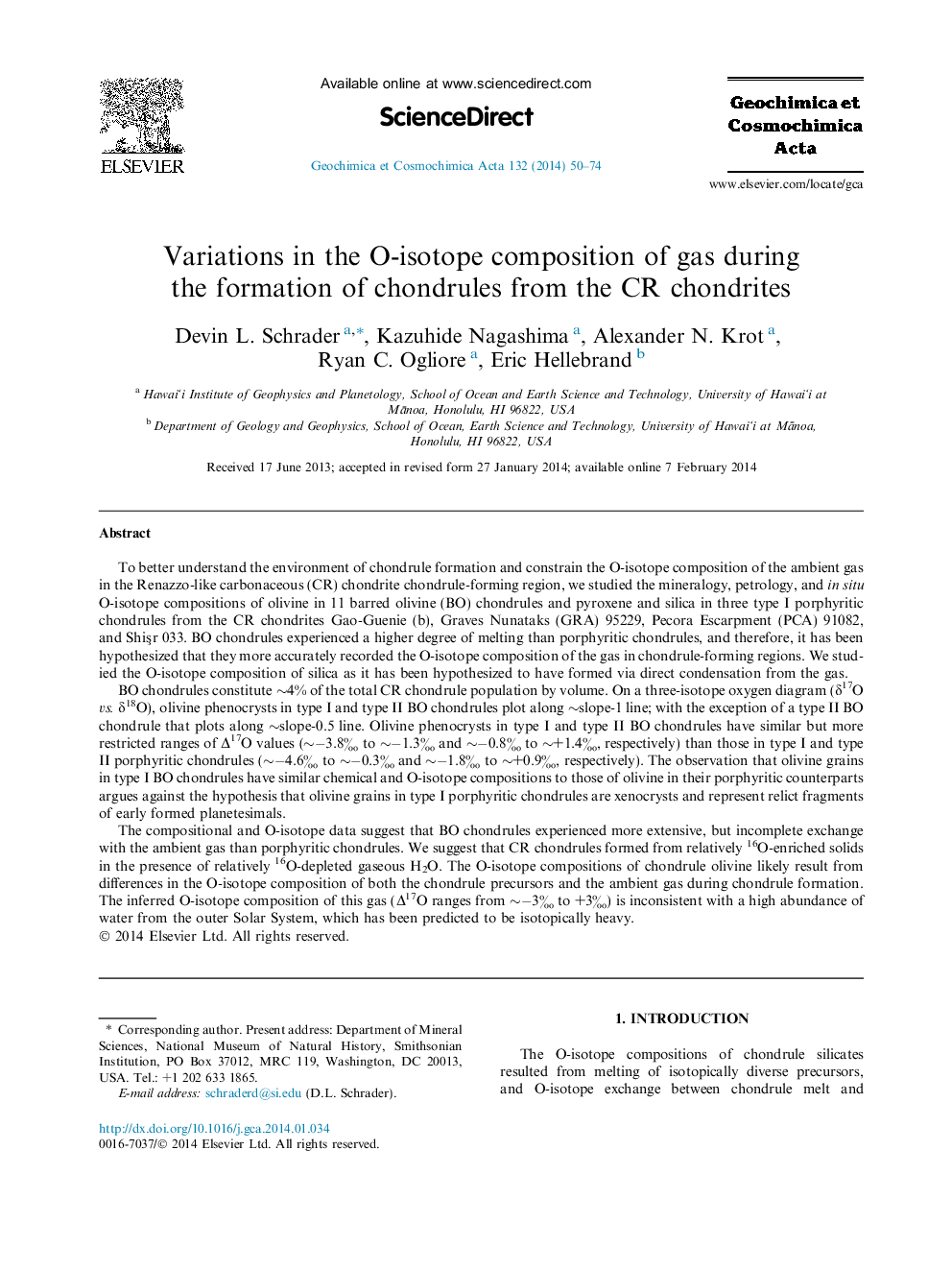| Article ID | Journal | Published Year | Pages | File Type |
|---|---|---|---|---|
| 4702219 | Geochimica et Cosmochimica Acta | 2014 | 25 Pages |
To better understand the environment of chondrule formation and constrain the O-isotope composition of the ambient gas in the Renazzo-like carbonaceous (CR) chondrite chondrule-forming region, we studied the mineralogy, petrology, and in situ O-isotope compositions of olivine in 11 barred olivine (BO) chondrules and pyroxene and silica in three type I porphyritic chondrules from the CR chondrites Gao-Guenie (b), Graves Nunataks (GRA) 95229, Pecora Escarpment (PCA) 91082, and Shişr 033. BO chondrules experienced a higher degree of melting than porphyritic chondrules, and therefore, it has been hypothesized that they more accurately recorded the O-isotope composition of the gas in chondrule-forming regions. We studied the O-isotope composition of silica as it has been hypothesized to have formed via direct condensation from the gas.BO chondrules constitute ∼4% of the total CR chondrule population by volume. On a three-isotope oxygen diagram (δ17O vs. δ18O), olivine phenocrysts in type I and type II BO chondrules plot along ∼slope-1 line; with the exception of a type II BO chondrule that plots along ∼slope-0.5 line. Olivine phenocrysts in type I and type II BO chondrules have similar but more restricted ranges of Δ17O values (∼−3.8‰ to ∼−1.3‰ and ∼−0.8‰ to ∼+1.4‰, respectively) than those in type I and type II porphyritic chondrules (∼−4.6‰ to ∼−0.3‰ and ∼−1.8‰ to ∼+0.9‰, respectively). The observation that olivine grains in type I BO chondrules have similar chemical and O-isotope compositions to those of olivine in their porphyritic counterparts argues against the hypothesis that olivine grains in type I porphyritic chondrules are xenocrysts and represent relict fragments of early formed planetesimals.The compositional and O-isotope data suggest that BO chondrules experienced more extensive, but incomplete exchange with the ambient gas than porphyritic chondrules. We suggest that CR chondrules formed from relatively 16O-enriched solids in the presence of relatively 16O-depleted gaseous H2O. The O-isotope compositions of chondrule olivine likely result from differences in the O-isotope composition of both the chondrule precursors and the ambient gas during chondrule formation. The inferred O-isotope composition of this gas (Δ17O ranges from ∼−3‰ to +3‰) is inconsistent with a high abundance of water from the outer Solar System, which has been predicted to be isotopically heavy.
